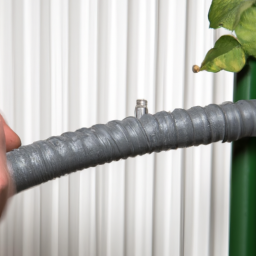How To Flush A Radiator With A Garden Hose
Table of Contents []
How To Flush A Radiator With A Garden Hose
Introduction
Flushing a radiator can be a tricky and tedious task. It can also be dangerous when not done properly. In this article, we'll take a deep dive into what's involved in flushing a radiator with a garden hose, as well as some popular subtopics related to this process.
How to Flush a Radiator With a Garden Hose
Flushing a radiator with a garden hose requires that you remove the end caps off the radiator and then attach a garden hose to the lower hose. You can then start the engine of the car and turn it over until the water runs clear. It is also important to make sure that any air pockets in the radiator have been removed, as this can impede the flow of water and cause the engine to overheat.
Preparing the Radiator
Before you begin flushing the radiator, it's important to make sure that the radiator is properly prepared. This includes checking the condition of the radiator and any hoses, the radiator fluid level, and any leaks. You'll want to make sure that the radiator is free of any debris or dirt, and that the fluid levels are the correct amount.
Attaching the Hose
Once you have the radiator prepared, the next step is to attach the hose to the radiator. This involves connecting the hose to the lower hose of the radiator and then to the top of the radiator. You'll want to make sure that the hose is properly seated and that it's secured to the radiator.
Starting the Engine
Once the hose is attached, you can start the engine of the car and turn it over until the water runs clear. During this process, make sure to monitor the radiator fluid levels and make sure that they remain steady. Also, if you are flushing an older radiator, you may need to manually bleed any air pockets that have built up within the radiator.
Filling the Radiator
Once the engine has been turned off and the radiator flushed, you can fill the radiator up with the appropriate radiator fluid. This process involves opening the bottom hose and filling the radiator until the fluid reaches the correct level. Make sure to continually check the fluid levels and to top off the radiator with fluid as necessary.
Cleaning the Hoses
Once the radiator has been flushed and filled with fluid, the next step is to clean the hoses that you used to flush the radiator. Use a stiff-bristled brush and a cleaning solution to clean the inside of the hoses and to make sure that there are no particles or debris left behind.
Final Thoughts
Flushing a radiator with a garden hose can be a tricky and dangerous process. That's why it's important to take your time and follow the steps outlined in this article. Be sure to check the condition of the radiator, attach the hose correctly, start the engine, and fill the radiator with the correct type of fluid. Finally, it's important to clean the hoses you used for flushing the radiator.
By following these tips, you should have no trouble flushing your radiator with a garden hose. Doing so will help to keep your vehicle running efficiently and will help to avoid any potential problems down the line.

Previous Page
Next Page
